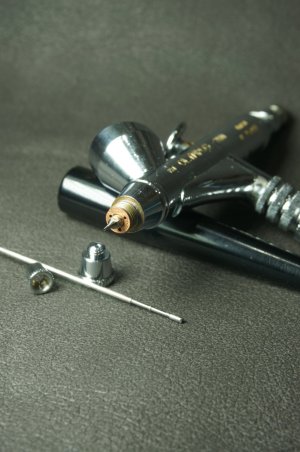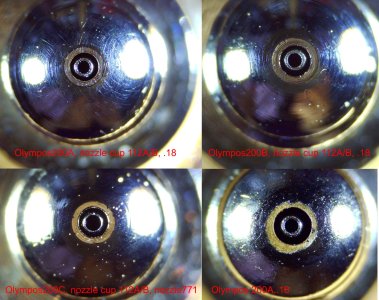I was thinking I should have expanded on that a little - I should have said that whether or not their actual performance approaches that of a true Micron has little bearing on how you feel using one. For example, the brushes I feel I do the best work with are the Iwata HP-B (and its variations) or a Richpen 212B. Micron or not, their performance matches my style of use as well, if not better than anything else I use. Under a microscope my CM-SB Takumi may produce finer results - but, to my hand and eye - while in use my HP-B feels like it is doing a better job (for me).
To work like a Micron, the air inside the brush needs to be handled like a Micron. The 200a/b/c could approach that performance if and only if the air was diffused and evenly spread down at the nozzle post base - where the single air channel is. I would imagine there is more turbulence inside the base of the nozzle cap on the 200 than the SP, so that too would be something that needed to be overcome. Would it be worth it? Only if you were comfortable using the brush...



